Happy Mardi Gras Day! If you can’t get down to Bourbon Street today, here’s the next best thing – jazz great Louis “Satchmo” Armstrong and his band performing the classic “When The Saints Go Marching In”:
Laissez Les Bons Temps Rouler, Mes Amies!
Happy Mardi Gras Day! If you can’t get down to Bourbon Street today, here’s the next best thing – jazz great Louis “Satchmo” Armstrong and his band performing the classic “When The Saints Go Marching In”:
Laissez Les Bons Temps Rouler, Mes Amies!
There was no bigger loss in the music world than the death of ‘Queen of Soul’ Aretha Franklin at age 76. Born in Memphis and raised in Detroit, Aretha originally sang Gospel at her father Rev. C.L. Franklin’s revivals. She signed on with Columbia Records, who tried to pigeonhole her with safe Easy Listening standards. Moving over to Atlantic Records in 1966, Aretha began recording at Muscle Shoals for producer Jerry Wexler, and belted out R&B hit after hit: the raucous “Respect”, “Baby I Love You”, “Natural Woman”, “Chain of Fools”, “Since You’ve Been Gone”, “Think”, “Spanish Harlem”, “Until You Come Back to Me”. Hitting a slump in the mid-70’s, Aretha came back strong with 80’s successes “Jump To It”, “Freeway of Love”, “Who’s Zoomin’ Who”, and duets with Eurythmics (“Sisters Are Doin’ It for Themselves”) and George Michael (‘I Knew You Were Waiting for Me”). The word “icon” gets…
View original post 1,286 more words
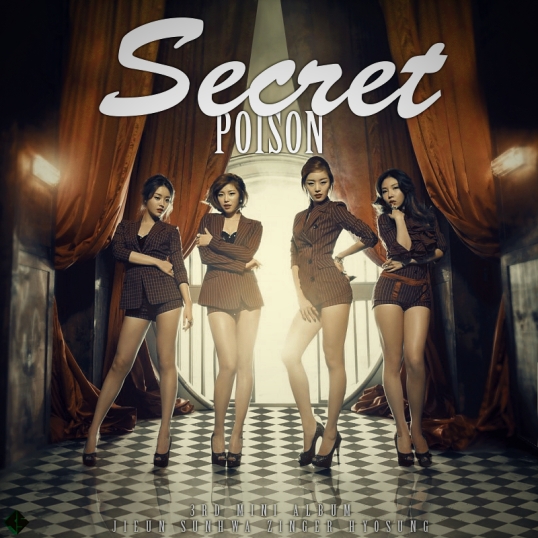
This is definitely not your “Poison” of the early 1990’s BBD (Bell Biv Deveo) days. This time it’s the 2012 mini-album release for the South Korean girl group Secret. The quartet took a year off before launching a comeback which saw the mini-album’s release and a new sexy and feminine look. It was a far cry from their previous cutesy image.
The song is a combination of many influences from jazz (a repeating saxophone section) to pop R&B (reminiscent of late 90’s and early 2000’s) to hip-hop with it’s layered beats. All of these influences make for a nice uptempo beat that the video is still able to mine for a nice sexy, sultry concept video that shows the quartet unleashing their femme fatale aspects.
The video itself is a more story driven than most K-pop videos of the time. With the girls (or should I say ladies) decked out in British women’s spy fashion mixed in with detective film noir femme attire. While the theme calls to mind Spillane, Hammett and Cain, the dance choreography screams R&B and Hip-Hop. From the choreo matching the song’s percussive beats to the body rolls and get-low moves.
While all four ladies of Secret gets a chance to shine in the song, the video itself is taken over by the visuals of group Leader Hyosung and group Visual and Maknae (youngest in the group) Sunhwa. Both Hana (rapper) and Jieun (Main Vocalist) don’t shrink from their own roles despite the first two having a much more visual impact and presence in the video.
I must agree with all who have seen the video and some of their stage live performances of the song, Hyonsung plus thigh-highs stockings were and, still are, a killer look. A visual good enough to kill for.

Hi! Still existing and loving my family, hope the same goes for all of you. I may be retired from all else in the music world, but the year end list is eternal.
Sample size: I have 83 albums released in 2017 at the time of writing this. Can’t promise I actually listened to all of them.
Surgeon General’s Warning: Ranking music is silly and I generally discourage it. (But I do it once a year anyway…….)

trip hop/hip hop
Sample track: Liar
fun French hip hop/trip hop album that seems to have gotten overlooked a lot. I listened to it a ton earlier this year. It’s not something I’ll remember years down the road, but it certainly earned a spot for as much as I played it.
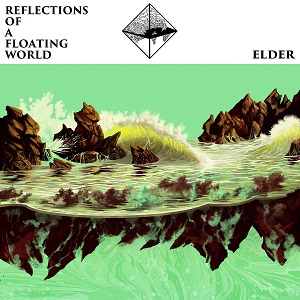
stoner prog
Sample track: Sanctuary
For me personally, this is probably the most unorthodox pick on my list, because it is heavily rock-centric in all the ways that typically turn me off. God but something about rock and roll has always felt absolutely soulless to me in a way that few genres can match at their worst. But Elder just do what they do so damn well that it’s impossible to hate this opus. An endless onslaught of prog ingenuity with a nice stoner rock crunch that keeps it driving from start to finish. It’s 64 straight minutes of ear candy without a dull note in the mix, and I have a world of respect for how flawlessly these guys accomplished what they set out to do.
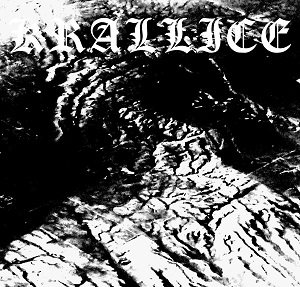
post-black metal
Sample track: This Forest For Which We Have Killed
Krallice are responsible for a lot of the best music to come out this decade, and in 2017 they pumped out two new ones (both painfully late into the year for a band that requires a lot of repetition to fully appreciate). While I haven’t actually read anything about either of these yet, the distinctly different styles between them have me pretty convinced that Mick Barr wrote the bulk of this one and Colin Marston took charge on the other. Go Be Forgotten gets off to a glorious start with its opening track, but the remainder has so far failed to really captivate me to the extent that most of their previous works did. It doesn’t raise the bar (or if it does, it hasn’t sunk in yet), but it’s still a fascinating exploration of highly complex soundscapes that few other artists have the technical precision to delve. And god that opening riff is sick. Krallice will be a perpetual year end contender as long they keep doing what they do.
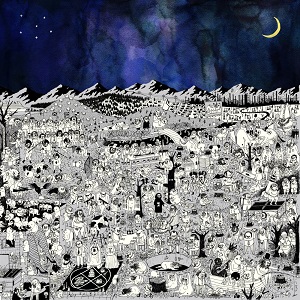
folk rock
Sample track: When The God Of Love Returns There’ll Be Hell To Pay
I have mixed feelings about this album, and my inclination is to point out the negative; suffice to say, it’s not lacking in universal praise. It wouldn’t be on my list if I didn’t love it. The reason it’s not higher is that, as I see it, Tillman too often defaults to rather throw-away lines. That’s not inherently problematic (see: my #1 pick), but I think it clashes with the more refined, theatrical vibe of the sound around them. Simple case in point: Total Entertainment Forever kicks off with an absolutely delicious line–Bedding Taylor Swift every night inside the Oculus Rift–and follows it up with something so generic that I feel it only exists to achieve a rhyme–after mister and the missus finish dinner and the dishes. Sometimes gentle flaws make a work all the more endearing, but Pure Comedy goes too big and refined to get away with it for me. I feel like he aimed extraordinarily high and almost got there.

blackened death metal
Sample track: II: Hallucinatory Black Breath Of Possession (Mountain-Eye Amalgamation)
A landscape album as only blackened death metal can paint one. Tchornobog takes you on a 64 minute journey across an entirely unpleasant and stomach-turning waste of all purpose ugliness that really reflected how I’ve felt about the world this year any time I let my attention range beyond my immediate household. We’re talking death metal aesthetics here so yes, that can be a compliment. And while the visions are certainly exotic, there’s not much surrealism of the lofty, artistic sort you find on say, a Blut Aus Nord album. It’s just leaves you feeling kind of dirty. It hit a note I could appreciate while maintaining enough melody and progression to avoid succumbing to redundancy.
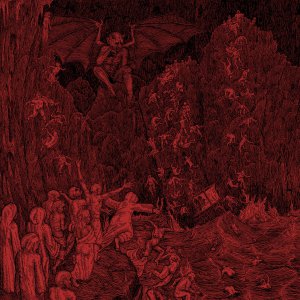
doom sludge
Sample track: Machitikos
Ridiculously heavy slow-rolled sludge that shouldn’t require any genre appreciation to crush your skull. At its peek on “Machitikos”, the quality of this album is unreal. Unfortunately I was pretty late to the ballgame, and their more ambient moments are going to take more than a sporadic month to leave a lasting impression or definitively fail to. Nowhere to move but further up the charts for this one.
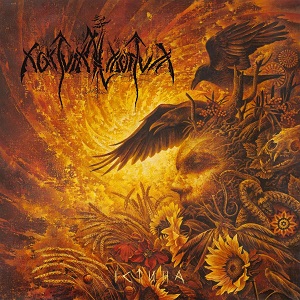
pagan metal
Sample track: Дика Вира
We’ve certainly come a long way from Knjaz Varggoth screaming hateful nonsense to crackling cassette recordings of Dollar General synth, and as endearing as Nokturnal Mortum’s early works may be, you can’t deny that he has matured (both musically and intellectually) substantially over the years. This album thoroughly lacks the trademark Eastern European folk metal execution that Knjaz inspired more than perhaps anyone else: brutally hammered folk jingles lashing out violently from beneath a wall of modern noise. Істина is a lot more even keel, to such an extent that its metal elements almost feel unnecessary at times. It fully embraces the more cerebral, orchestral sound we began to hear on Weltanschauung and leaves most else behind, achieving a new height in terms of orchestration. I do miss Knjaz’s more passionate explosions, but I don’t consider that a flaw. The real down side to the album for me stems from the studio. For all of its grand instrumental diversity, the complete package is a bit washed out. Everything feels like it’s playing in the background as a supporting element to a non-existent centerpiece. It’s something I’m certainly used to–Nokturnal Mortum have always struggled a bit on the finer finishing touches of sound production–but it’s still a fault that’s hard to ignore. An incredibly solid album that could have been even better.

black metal
Sample track: Vihan Temppeli
This is probably the most unknown album on my list. It’s just straight-up black metal. No frills. No novelties. Really it’s the sort of thing I rarely listen to these days, because most great bm artists have moved on to more experimental fronts. But this is tight as fuck. The riffs are great and it’s got a nice punchy pace and a crisp tone that suits the mood perfectly. Outstanding debut from an unheard of artist. Hoping he sticks around for many years to come.
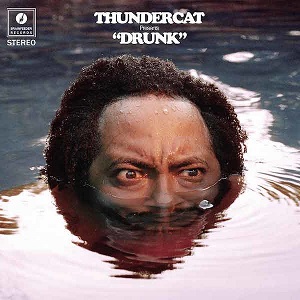
funk/jazz
Sample track: Bus in These Streets
A tongue-in-cheek dreamfunk fantasy. Artists who can let a cheesy sound be cheesy often accidentally stumble into brilliance. This guy makes some of the goofiest sounds that funk and jazz have ever imagined somehow feel endearing. I’m also pretty impressed by how distinct his sound is. I mean, considering how radically uninformed on this sort of style I am, it kind of blew my mind that I could instantly go “this guy must have wrote the bass lines to Wesley’s Theory“. I think Drunk is an incredibly well-craft work masked behind a delicious veil of comedy. And it’s given us such eloquent 21st century mottos as “thank god for technology, because where would we be if we couldn’t tweet our thoughts?”
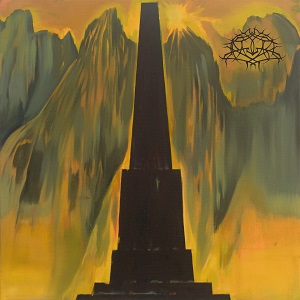
post-black metal
Sample track: Etemenanki
If Go Be Forgotten offered Krallice’s most deranged opening melody to date, Loüm might take the prize for their heaviest boot in the ass. Etemenanki hammers down all the brutality of a headbanger’s wet dream from the first note without budging an inch on Krallice’s classic eclectic tremolo noodling. I don’t think I’ve wanted to just open my mouth and shout “fuuuuuuuuuuuuuuuuuuuuuck” to a Krallice song this bad since Inhume. As with Go Be Forgotten, there’s a serious question of whether the album as a whole is really that great or if the opening song just carries it, and that’s not to knock the rest so much as to say that by Krallice’s ridiculously high standards I think it might have some mediocrity. You can never really tell with most Krallice songs until you’ve heard them four dozen times. It’s complicated, intricate shit that your brain doesn’t instinctively unravel. My gut tells me that Loüm will keep on growing on me in a way that Go Be Forgotten may struggle to, and I was right about that with Prelapsarian’s incredibly late release last year. (Yes, it is amazing.) The only lasting down point about Loüm for me is, surprisingly, the addition of Dave Edwardson (Neurosis, Tribes of Neurot) on vocals. He does a killer job, but I am shamelessly in love with Nick McMaster’s vox and can’t help but miss them.

folk
Sample track: Crow
Phil Elverum’s wife died last year, and he wrote this album. It’s artistically significant for reasons that are pointless to explain, because I think you will either already get it or it will fundamentally conflict with whatever life coping mechanism you personally subscribe to, and both are fine. It matters to me more than other albums about death because we appear to share roughly the same world view. It isn’t my favorite album of the year because it can’t be.

post-rock
Sample track: Bosses Hang
I somehow managed to ignore the rebirth of GY!BE in spite of being entirely aware of it, and this is the first album I’ve listened to by them since Yanqui U.X.O. fifteen years ago. In the meantime, I’ve become an avid consumer of Silver Mt Zion, and after that long of a break it’s easy to forget just how different the two projects were. I’m at a loss for words to properly describe how I feel about Luciferian Towers because I have nothing remotely current and similar to compare it to. “Bosses Hang” and “Anthem For No State” are both absolutely mind blowing, and I usually skip the first and third tracks and don’t even care. This is the greatest band in post-rock being exactly that.
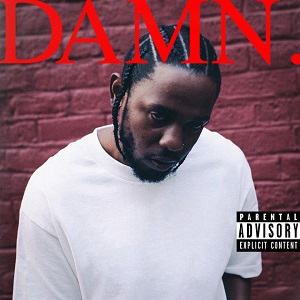
hip hop
Sample track: DNA
Every time I saw this album top another year-end list, I wanted to move it further down mine. It doesn’t move me on an emotional level like To Pimp a Butterfly. It’s not Kendrick’s greatest work. Can it really be the best of 2017? But every time I revised my year-end list, it just kept moving up instead. Everything he touches has a subtle finesse to it. I love the sound of his voice. I love the way he weaves it into the instrumentation flawlessly. I love how every aspect of each song seems painstakingly tailored to suit the intended vibe. I can just really get into this from start to finish time after time with zero effort. It was my 2017 fallback the grand bulk of the times I wasn’t in the mood for something dark or heavy. This album makes me feel empowered every time I put it on with no cheap sense of escapism attached, and god did I need something like that.

drone/doom/psych/post-rock
Sample track: Dystopia (Vanishing Point)
Wow. This is 16th year that I’ve compiled a year-end list. For the grand majority of that time, I would have named Boris in my top 5 favorite bands if you asked me. During that time, they’ve put out 53 releases just that I have managed to acquire. And not one has earned my #1 slot. Smile came so close. So close. And now I’m saying it again. I almost feel guilty leaving Dear at #2. It was never dropping any lower. But if you’re at all familiar with it, this might sound generous. Dear is nowhere near their most well-received album. It is absolutely nowhere near their most accessible. Doom and drone at its core, it’s a slow drip grind that will leave all but the most steadfast fans bored out of their minds on first encounter. Yet I somehow managed to listen to it close to 50 freaking times. It wasn’t that I liked it at first. I kind of didn’t. But the mood was right. It hit that sweet spot between ambience and melody that made it never quite dull enough to bore inherently but never quite memorable enough to bore through familiarity. It was dark but it wasn’t morbid. It was just the right sort of fuzz to make me feel more alert without distracting me. And it was through that extremely passive but relentless pattern of listening that its finest moments slowly revealed themselves to me, raising the bar higher and higher, until now it blows my mind that a track like Dystopia (Vanishing Point) could have failed to sweep me off my feet on first encounter. It certainly manages to every time now, on take number one hundred and god knows what. This isn’t my favorite Boris album, but I suspect it’s much higher up there for me than for most fans, and after a very great deal of consideration it only failed to take the title by a fraction of a hair. Oh, I also got to watch them play it live in its entirety. 😀

Americana
Sample track: Lone Star
The grand prize goes to Sun Kil Moon. I think this might be for me what Pure Comedy has been for a lot of other people this year. It just speaks to so much I’ve been feeling in 2017 in a way I can completely relate to. Mark Kozelek takes half of the stuff I’ve been making enemies spouting all year and sets it to solid American folk music. He has a blue collar political perspective that offers no compromise for our “total fucking asshole” President but takes far more cutting hits at liberal America’s zero-attention-span reaction-click-and-move-on culture for allowing the country to fall into this state. The album is a two hours and ten minutes meandering disjointed travel through personal stories and monologues that reach all over the place, but underneath it all is a consistent love and appreciation for the bonds we share in our meager little lives, and an intense compassion for those who have permanently lost them. If he comes across as cranky, he’s just pissed at how many Americans have lost sight of this.
Previous years on Shattered Lens:
 Hype is a dangerous thing.
Hype is a dangerous thing.
Too little of it will leave a movie’s showing with tons of empty seats. Too much, and you raise skepticism in the masses. The movie never lives up to the growing expectations and tanks before you know it. Tonight (as of this writing), preview audiences are going to be packed with fans waiting to catch the latest Star Wars film. While I hope it works out for them, there’s another film moving into a wider release this weekend that deserves just as much love. Right now, La La Land is heavily hyped, and hopefully will be part of every major awards run. I still want to try to catch some of the other soon to be nominated films for the Awards season, but I’m good for right now. I’m that kid in the corner, totally content with that one little Transformer he always wanted while other presents still need to be opened. Unless I run into another film that captures my eye (and ears) like this one, La La Land is easily my go to pick for everything this year. It’s a fun little love story wrapped up in musical dance numbers, my feel good movie.

I really, truly loved La La Land.
For me, that’s saying a lot. Outside of the usual Disney film, I don’t see too many musicals. I can count on one hand a few favorites – Frank Oz’s movie version of Little Shop of Horrors, Baz Luhrman’s Moulin Rouge, both Muppet films and of course West Side Story. However, I’ve never watched Singing in the Rain, or any of the Astaire/Rogers numbers. The opening dance sequence in Ted 2 might be the closest I’ve come to all that, or maybe the French Mistake in Blazing Saddles. However, I walked out of La La Land with a huge smile on my face, one that prompted me to run right back in for the next showing. This isn’t meant to convince you to see the film or not. If you do, cool. If you don’t, that’s fine. I just know that I’ll be scooping this up come the Blu-Ray release. This review is me, geeking out.
La La Land is a very simple story. In Los Angeles, Mia (Emma Stone) is an aspiring actress who meets Sebastian (Ryan Gosling), a lover of Jazz who’s fighting to keep it alive. Both individuals are fighting to fulfill their dreams, and it’s hard not to root for them. This leads to a friendship that grows, surrounded by great music. For the story, that’s all you really need to know, and to go into more detail risks going into spoiler territory. It’s a classic Boy Meets Girl in the Big City situation.
Having worked together in Gangster Land and Crazy Stupid Love, Stone and Gosling already have some great chemistry. The dialogue pops between them and is very reminiscent of some of the Tom Hanks/Meg Ryan films. With the conversation style, coupled with Damien Chazelle’s writing, it all feels very natural. Both of their characters come across as passionate individuals when it comes to the talent of their choice. The cast also includes singer John Legend, Callie Hernandez (Blair Witch), Jessica Rothe (Better Off Single), and Sonoya Mizuno (Ex Machina). If I have one problem with La La Land, it would just be that I wanted to see more of the co-stars, but the film truly belongs to the leads. At least in a film like Grease, you were at least aware of the supporting cast and their stories. It’s a tiny nitpick, but it doesn’t get in the way of the story’s progression.
Visually, La La Land is full of rich colors and deep shadows. When there’s a change in lighting or a focus made, it’s a beautiful thing to behold. Linus Sandgren (American Hustle, Joy) does a great job here and I’m adding him to my list of Cinematographers to keep an eye on. The movie feels like a classic film from start to finish. The editing deserves some kudos as well. Every scene feels like it grew naturally from the one before it, and there’s rarely a moment where you ask yourself if one scene needed to be there if there were any holes to be found. If there was an editing mistake in La La Land, I couldn’t find it.
As with Guy and Madeline On a Park Bench & Whiplash, it wouldn’t be a Chazelle film without music. Justin Hurwitz is on music duty here and La La Land’s music is in some places snappy. I picked up the soundtrack after the movie, and there’s a good chance that some of that music is going to get stuck in your head. Emma Stone may get some recognition come awards season with one song in particular, but overall it’s difficult not to listen to some of these and not want to nod your head with the crowd. On my exit after the second showing, there were people humming and/or whistling the tunes.
Overall, La La Land is a wonderful film that reminds one of the beauty of the Cinema Experience, with a pair of characters that make you want to cheer them on. Really, if you have a chance to see this in the theatre, do so. Who knows, maybe you’ll find yourself with a spring in your step too on the way out.
Now that Lisa’s finished cleaning out her DVR, it’s time once again for me to clean mine, featuring five fabulous films noir:
I first got my DVR service from DirecTV just in time for last year’s TCM Summer of Darkness series, and there’s still a ton of films I haven’t gotten around to viewing… until now! So without further ado, let’s dive right into the fog-shrouded world of film noir:
RAW DEAL (Eagle-Lion 1948, D: Anthony Mann)
This tough-talking film seems to cram every film noir trope in the book into its 79 minutes. Gangster Dennis O’Keefe busts out of prison with the help of his moll ( Claire Trevor ), kidnaps social worker Marsha Hunt, and goes after the sadistic crime boss (Raymond Burr) who owes him fifty grand. Director Mann and DP John Alton make this flawed but effective ultra-low budget film work, with help from a great cast. Burr’s nasty, fire-obsessed kingpin is scary, and John Ireland as his torpedo has a great fight scene with O’Keefe. The flaming finale is well staged…
View original post 614 more words
On Thursday morning, jazz legend Ornette Coleman died. He was 85.
My father loves jazz and I grew up listening to a soundtrack that included Miles Davis, Charlie Parker, John Coltrane, and Ornette Coleman. Out of all of them, Coleman was his favorite. As he would always say, no one else sounded like Ornette Coleman.
Ornette Coleman spent a lifetime reinventing both himself and jazz. A tireless innovator and a fearless experimenter, Ornette Coleman returned jazz to its improvisational roots. With his 1961 album Free Jazz: A Collective Improvisation, he not only popularized a new approach to jazz but gave it a name as well. As Coleman himself once said, “For me, being an innovator doesn’t mean being more intelligent, more rich, it’s not a word, it’s an action.”
Rest in peace, good gentleman.
There is a common quip you’re likely to find if you read comments on Konami’s Snatcher: of all the games that I have never played, this one is my favorite. The game was ported and rehashed for much of the late 80s and 90s, appearing on the PC-8801, MSX2, PC-Engine, Sega Mega-CD, Sony Playstation, and Sega Saturn. The highly censored Sega CD port was the only English translation, and given how horribly that system flopped, you have almost certainly never played this game. That’s no fault of Konami’s. America and Europe are not exactly hot markets for menu-based graphic adventure games.
But Snatcher has a cult following of western fans regardless. Magazines reviewing the Sega CD port praised it across the board. It’s one of the earliest highly successful (in Japan at least) cyberpunk video games, and it merges this with a detective story, grasping the genre’s affinity with film noir. Its original 1988 score captured the essence of cyberpunk aesthetics, filled with jazzy melodies driven by futuristic beats where it could have easily gotten away with generic action music instead. And the game is deliciously dated: its post-apocalyptic earth–set in the oh-so-distant future of 2042–comes about as a consequence of the Soviet Union unleashing a devastating biological weapon. All of these factors make its obscurity a bit enticing. It’s not like you’ve never heard of the game because no one liked it. It’s more of a lost treasure.
The game’s western obscurity plays directly into the appeal of its genre. Learning about it, I felt like I was excavating a modern ruin from a digital trash heap, diving into long forgotten file-sharing archives and posting anonymous requests in dark corners of the internet for sources beyond Wikipedia. One of the most enjoyable stretches of my long-winded videogame music series in 2012 was the process of piecing together fragments of information to arrive at a fairly accurate break-down of the original score. It was a Konami Kukeiha Club project, which can often be a lost cause to dissect, but I dug until I found that the original PC-8801 version’s credits listed each track by individual composer. This was already complicated by the fact that it incorporated changes in the simultaneously released MSX2 port, awkwardly intermixing the staff who converted the sound. You can read my two-part entry on Snatcher below, if you’re curious:
VGM Entry 56: Snatcher (part 1)
VGM Entry 57: Snatcher (part 2)
“One Night in Neo Kobe City”, not to be confused with “Twilight of Neo Kobe City”–I had a lot of fun dealing with those sorts of naming conventions through a bad Japanese to English translator–is not original to the 1988 version of Snatcher. Motoaki Furukawa (古川もとあき) first composed it for the 1992 PC-Engine port, when greatly improved audio technology made a track like this possible. (Honestly, think about the sound quality in games you were playing in ’92. This was pretty advanced.) The song really sets the stage for the cyberpunk tech noir experience that follows. I suppose it’s not dark or foreboding, really, but when you connect this sort of sax-driven jazz to a futuristic city, the relation feels natural. When you connect it to Snatcher, it becomes cyberpunk to the core.
Hats off to Konami for letting Snatcher thrive on Youtube when so many other game producers routinely scour the net of their antiquities. (I personally had my account banned by Taito for posting some music to an obscure 80s arcade game.) I don’t know why cease and desist orders are particularly popular in the world of videogame music, but at least in my experience Konami seem to avoid that nonsense. It’s pretty cool, since the Konami Kukeiha Club doesn’t rate far behind Square-Enix’s illustrious list of composers.
식료품groceries definitely takes one of the more unique approaches to vaporwave that I have heard so far. The name and imagery place you in a location I rather doubt any other album has ever centered around: a fresh produce market. The new age, jazz, and softened traditional Asian (Korean?) folk melodies are a lot more naturally pleasing than what most of vaporwave samples from. I might have enjoyed some of this music in its original form. 식료품groceries colors it with 80s beats and a low-volume haze that take you to a supermarket from another world. It is futuristic, in a sense, but the 80s vibe places it firmly in the past. It is, perhaps, a nostalgic reminder of how the future used to be perceived. On 슈퍼마켓Yes! We’re Open, you relive the experience of visiting a supermarket when they were still new and novel. What other genre of music can give you that?
Listening to this, it strikes me just how different 20th century trash music is compared to what we hear in retail stores and restaurants today. Much of it was certainly contrived, copying sounds once believed to place consumers in a purchasing state of mind. Easy listening with a bit of pep, always subliminal, it was meant to make you feel empowered to buy anything that caught your eye without care for the cost. Whether that approach actually worked, eh, it’s hard to say. The Muzak corporation certainly made a lot of money pitching it. But beyond serving a capitalist agenda, the music did have inborn qualities. If it really was pure trash, it would not have been very effective. What it might lead you to buy–that was the garbage.
If you walk into pretty much any business but Panera Bread in America today, you won’t hear anything like it. You will instead catch the same 20-track rotation regardless of the store, all songs conceptualized in corporate offices and performed by talentless beauty queens. The music has become itself a product. The idea is to craft music so mind-numbing that the melody will stick in your head all the way to the check-out, where the albums are conveniently on display for you to purchase if you haven’t found them on your smart phone yet. Since most people can’t differentiate infestation from fascination and buy on impulse, it’s not a bad scheme. When the practice becomes so universal that I can’t even choose my retailers based on their lack of painfully bad audio, it’s a great scheme. (By the way, I eat at Panera Bread a lot, and not so much for their average food.) Modern society’s further descent renders classic “shopping music” an art, and vaporwave artists are reviving it as such. In a round-about way, 식료품groceries might be one of the bleaker artists I feature here. By taking what was once considered trite and revealing its relative quality compared to retail music today, it reminds us just how much more vapid and commercial our world has become.
Of the vaporwave I’ve heard so far, no individual song has struck me more than “Airglider”, the opening track on フライトを楽しむ (Enjoy Your Flight!) by 日本航空株式会社 ✈ Japan Airlines. Expanding on the sort of feathery easy listening you might hear while boarding an airplane, the song lifts you up into the sunlit skies above an Asian metropolis in a way that the original sampled tunes could never realistically accomplish. The guitar is totally contrived–the sort of thing that a washed-up rock star might produce under contract from a commercial director–but 日本航空株式会社 ✈ Japan Airlines manages to twist it into this dreamy ride. The hyper-generic solo becomes stimulating–a vision of soaring through the clouds aboard a wonder of no-longer-so-modern technology. You feel like you are experiencing a commercial flight in the 70s or 80s, when it was not such a common affair. The very brief, unintelligible vocal line carries a sense of style. You are in the very least a first class customer. You might be taking off on your own private jet after a long day of insider trading on the Tokyo Stock Exchange.
Well, no, that’s just what the airline wants you to believe. You’re sitting in coach. Everything about this presentation is over the top in a clumsy, reckless sort of way. The song cuts in a moment too late, missing a split second of the opening note. The artist’s name is outrageous, going so far as to visually remind you that you are on a plane. (It has since been reduced to simply AIR Japan.) The song is bombastic, slamming its product down your throat. The video shows an attendant passionately spoon-feeding you information dumbed down to a child’s level in that uniquely artificial, condescending Japanese way. It’s pseudo-class for the middling mass consumer. It is everything vaporwave was initially intended to reflect, made all the more poignant through a careful, precise effort to capture the aesthetic. A lot of vaporwave has its go at cheap marketing by being intentionally careless. This one crafts the carelessness with a keen awareness, and the result is a lot more revealing. It feels more authentic than the real deal. It creates in the listener the sort of sales-minded artificial experience that real commercial music is usually too shallow to achieve. You will fly Japan Airlines again.